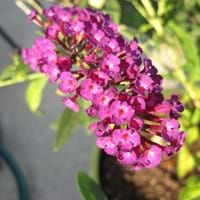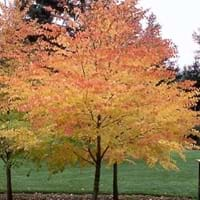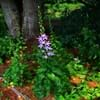Life Span
Perennial
Perennial
Type
Flowering Plants, Shrubs
Tree
Origin
Africa, America, Asia
Eastern Asia, China, Japan
Types
Lockinch, Petite Indigo, White Profusion
Heronswood Globe , Kreukenberg Dwarf
Habitat
Along Railroads, River side, Roadsides
shaded moist road banks, Wet Woods
USDA Hardiness Zone
5-10
4-8
Sunset Zone
H1, 2a, 2b, 3a, 3b, 4, 5, 6, 7, 8, 9, 10, 11, 12, 13, 14, 15, 16, 17, 18, 19, 20, 21, 22, 23, 24
2b, 3a, 3b, 4, 5, 6, 14, 15, 16, 18, 19, 20
Habit
Arching/Fountain-shaped
Oval or Rounded
Flower Color
Blue, Pink, Purple, Red, White
Red, Green
Flower Color Modifier
Not Available
Bicolor
Fruit Color
Not Available
Green, Copper, Sandy Brown
Leaf Color in Spring
Gray Green
Purple, Light Green, Bronze
Leaf Color in Summer
Gray Green, Light Green
Green
Leaf Color in Fall
Gray Green, Light Green, Yellow green
Yellow, Gold, Orange Red
Leaf Color in Winter
Not Available
Not Available
Leaf Shape
Egg-shaped
Heart-shaped
Plant Season
Fall, Spring, Summer, Winter
Spring, Summer, Fall, Winter
Sunlight
Full Sun, Part sun, Partial shade
Full Sun, Partial Sun
Type of Soil
Loamy, Sandy, Well drained
Clay, Loam
The pH of Soil
Neutral, Slightly Acidic, Slightly Alkaline
Acidic, Neutral
Soil Drainage
Well drained
Well drained
Bloom Time
Spring
Early Spring
Tolerances
Drought, Pollution, Salt, Soil Compaction
Not Available
Where to Plant?
Ground, Pot
Ground
How to Plant?
Seedlings, Stem Planting, Transplanting
Seedlings, Transplanting
Plant Maintenance
Medium
Medium
Watering Requirements
Form a Soil ring to water efficiently, Water Deeply, Water twice a day in the initial period
Keep ground moist, Use Mulches to help prevent water loss during hot and windy weather
In Summer
Lots of watering
Lots of watering
In Spring
Moderate
Moderate
In Winter
Average Water
Average Water
Soil pH
Neutral, Slightly Acidic, Slightly Alkaline
Acidic, Neutral
Soil Type
Loamy, Sandy, Well drained
Clay, Loam
Soil Drainage Capacity
Well drained
Well drained
Sun Exposure
Full Sun, Part sun, Partial shade
Full Sun, Partial Sun
Pruning
Cut or pinch the stems, Prune for shortening long shoots, Prune if you want to improve plant shape, Prune ocassionally, Remove damaged leaves, Remove dead or diseased plant parts, Remove deadheads, Remove shoots
Prune if you want to improve plant shape, Remove dead branches
Fertilizers
All-Purpose Liquid Fertilizer
All-Purpose Liquid Fertilizer, Apply 10-10-10 amount
Pests and Diseases
Downy mildew, Leaf spot, Spider mites
Bacterial leaf spot, Leafminers, Red blotch
Plant Tolerance
Drought
Salt and Soil Compaction, Shade areas, waterlogging
Flowers
Yes
Insignificant
Flower Petal Number
Single
Not Available
Foliage Texture
Medium
Medium
Foliage Sheen
Matte
Matte
Attracts
Butterflies, Hummingbirds
Birds, Butterflies
Allergy
Vomiting
sneezing, Sore eyes
Aesthetic Uses
Showy Purposes
Beautification, Cottage Garden
Beauty Benefits
Not Available
Making cosmetics, Skin Problems
Environmental Uses
Air purification
Shadow Tree, soil stabilisation
Medicinal Uses
Not Available
Not Available
Part of Plant Used
Flowers, Leaves
Whole plant
Other Uses
Showy Purposes, Used as Ornamental plant
Showy Purposes, Used as Ornamental plant, Used in pulpwood and lumber production
Used As Indoor Plant
No
No
Used As Outdoor Plant
Yes
Yes
Garden Design
Edging, Feature Plant, Foundation
Feature Plant, Shade Trees, Street Trees
Botanical Name
Buddleia davidii
CERCIDIPHYLLUM japonicum
Common Name
Butterfly Bush, Summer Lilac, Butterflybush
Katsura Tree
In Hindi
Butterfly Bush
Cercidiphyllum
In German
Schmetterlingsstrauch
Kuchenbäume
In French
buisson de papillon
Cercidiphyllum
In Spanish
arbusto de las mariposas
Cercidiphyllum
In Greek
Butterfly Μπους
Cercidiphyllum
In Portuguese
arbusto de borboleta
Cercidiphyllum
In Polish
Butterfly Bush
Grujecznik
In Latin
papilio rubo
Cercidiphyllum
Phylum
Spermatophyta
Magnoliophyta
Class
Dicotyledonae
Magnoliopsida
Order
Lamiales
Hamamelidales
Family
Scrophulariaceae
Cercidiphyllaceae
Genus
Buddleja
Cercidiphyllum
Clade
Angiosperms, Asterids, Eudicots
Angiosperms, Eudicots
Tribe
Not Available
Not Available
Subfamily
Not Available
Not Available





